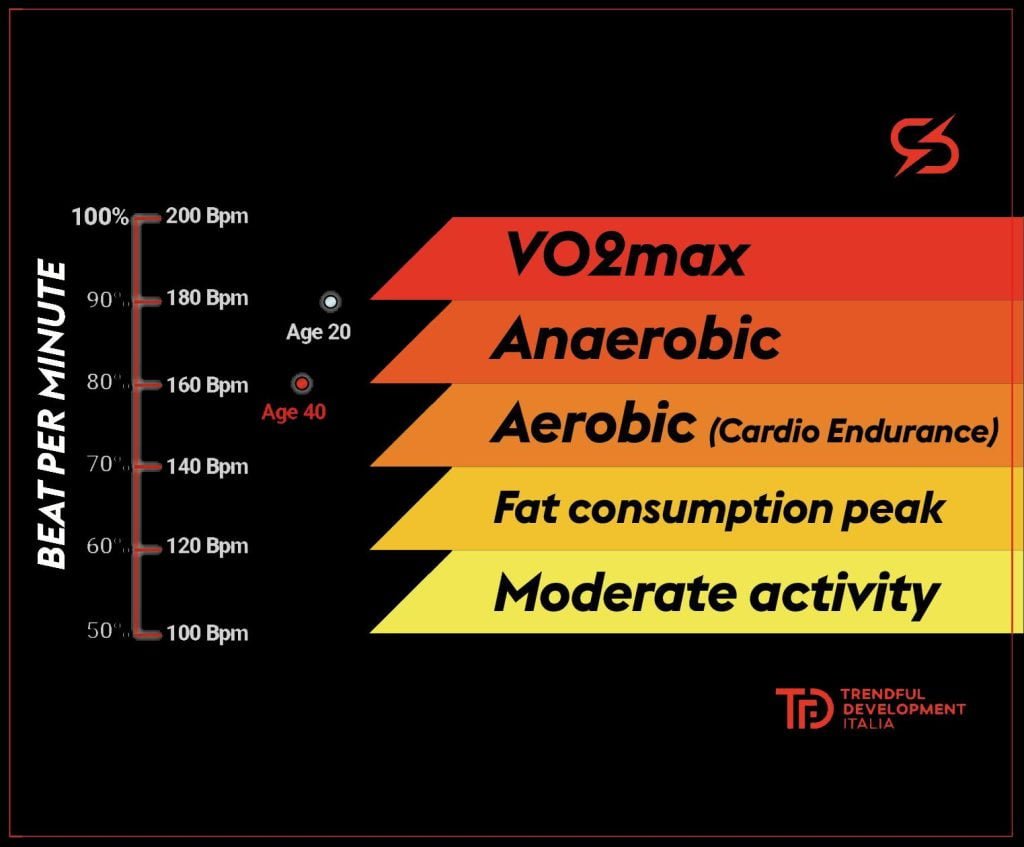If you are wondering how to fight lactic acid, it will be necessary to clarify things a little. The pain we feel does not always correspond to the presence of lactic acid in the legs, or in general, in the muscles. Lactic acid, although it is a toxic substance associated with the sensation of muscular fatigue, is a component normally present in our tissues and even in the bloodstream. It plays several roles, being linked to energy metabolism.
What is lactic acid?
Lactic acid or lactate is a waste product of the energy process of our muscles when this occurs in the absence of oxygen. Anaerobic glycolysis. Some physiological systems can only make use of this mechanism to produce energy, i.e. anaerobic lactacid metabolism: this is the case of the retina and red blood cells. Even in conditions of complete rest, therefore, the human body produces lactic acid and it is believed that it is normally in the blood lactic acid present in the proportion of 2 mmol/L. The human body, at rest, therefore produces 120 grams of lactic acid per day and as much as a third through tissue organs such as blood cells.
When lactic acid is formed
During muscular use and in particular during explosive and intermittent effort, lactic acid levels rise rapidly. In fact, they can reach very high proportions compared to rest, i.e. 20 mmol/L in the blood. The pale or fast muscle fibers (our muscles are made up of different types of fibres) are largely responsible for the increase in lactate in the tissues, but all the muscles, once the aerobic threshold in which they are able to obtain oxygen and dispose of the byproducts of glycolysis, “produce” lactic acid. Even mixed muscle fibers and red or slow ones, even though they are the most efficient at disposing of it.
Our body is able to dispose of lactic acid through the liver (Cori cycle) or reconvert it into energy, i.e. glycogen, for as much as 20% of its total. Despite this, there is a threshold corresponding to 80% of the maximum heart rate VO2max, beyond which it is unable to metabolize it directly and begins to accumulate it in the tissues and blood. Although the production of lactic acid is mainly linked to short and intense efforts, even prolonged activities at a lower intensity – this is the case with some endurance sports – can induce its accumulation in the muscles. The reason is the time needed to dispose of the acid itself: if the presence of the acid tends to halve every 30′, the accumulation may require 2 or 3 hours for it to be completely disposed of. In some contexts, the massive use of glycogen resources reaches a critical threshold. If we evaluated the lactic acid accumulation threshold (the Anaerobic Treshold “AT ”; the Velocity at the Onset of Blood Lactate Accumulation “VOBLA” or the Lactate Treshold “LT”) we would notice considerable variations in athletes who trained hard the previous day or who have not assimilated the right amount of carbohydrates before or during the performance.
Runners and lactic acid
Cross-country athletes such as marathon runners, when compared to sprinters or team sports players, tend to have a much higher threshold for lactic acid accumulation. This is due to a different muscle composition (they trained different fibers to perform the athletic gesture), but above all to a higher VO2max. The anaerobic threshold is higher and the lactic acid produced is produced only at higher rates. So a marathon runner, even if he is not as prepared in sprints or short distance sprints, will only start to accumulate lactic acid at a higher speed than a midfielder or a footballer. Different evaluations concern multidisciplinary sports, where always different kinetic chains with stops and restarts are used. Even if there is no comparison, it is plausible that over Olympic distances a triathlete accumulates more lactate than a marathon runner, in the same race time.

How to dispose of lactic acid
Let’s dispel a myth. Muscle pain, lactic acid, remedies… only a small part of the pain we feel after physical effort is due to the degradation of pyruvate and the consequent production of lactic acid. The pain in the muscles is not due to lactate, except in the short period following the performance. In fact, lactic acid is even useful for recovery as it stimulates the production of hormones such as testosterone.
As we explained, the byproduct of anaerobic glycolysis is pushed out of the cell when it is in excess. It accumulates in the muscles and blood, but is eliminated quickly. What persists is the delayed soreness, the so-called DOMS (Delayed Onset Muscle Soreness ) which is linked to the damage that the muscles have suffered to carry out their task. There are many theories and strategies to combat these post-workout muscle soreness, but we’ll talk about them in another article. In general we can say that most of the exercises, massages and other therapies used to reduce lactic acid are actually methods to accelerate muscle repair. Light running, physiotherapy, consumption of water, amino acids and bromelain can help the fibers to repair themselves, the blood to flow and reduce the persistence of muscle contractures. The pain we feel is therefore only muscular hyperalgesia, hypersensitivity and is mainly due to the greater presence of blood in the tissues, not to lactic acid.
Strategies to counteract lactic acid
In first place among the strategies on how to fight lactic acid is aerobic capacity training (we will dedicate an article to this aspect). As we have seen, the VO2max value is closely linked to the production of excess lactic acid. An athlete with good preparation will have an accumulation threshold even 10% higher than an untrained or sedentary person. Generally, in running, a preparation strategy based on repetitions of increasing intensity is adopted, with short or partial and long recoveries. The purpose of this type of training is precisely to saturate the muscles with lactic acid to condition the body’s response to dispose of it, developing a better psychological and neuromuscular reaction to the discomfort it generates.
Nutrition and lactic acid
Can a different diet prevent lactic acid in the muscles? Maybe not directly, but it can play an important role in improving the threshold at which this accumulates. We said that lactic acid is produced when muscles have to produce energy in the absence of oxygen. A better availability of oxygen in the muscles is then the result to be achieved with correct nutrition or supplementation. Eat plenty of leafy vegetables (e.g. some types of salad, spinach, etc.) and red beetroot in one volume significantly (even 500g per day) can increase the presence of nitrites in the blood and consequently muscle oxygenation. Furthermore, vegetables can be rich in alkalizing substances, e.g. magnesium, whose intake is potentially useful in counteracting lactate acidosis.
Above all, we must not forget, correct hydration that allows lymphatic circulation and the necessary supply of carbohydrates and carbohydrates will put the body in the right condition to manage physical effort. Let’s remember that as a by-product, lactic acid is a system for the body’s adaptation to effort. A correct intake of macro and micronutrients will be decisive for the correct functioning of the energy system.
Lactic acid supplements
The bicarbonate present in the blood buffers blood acidification. Unfortunately, taking bicarbonate or calcium carbonate orally will only reduce the acidity of the stomach, but hardly the contextual acidity at the blood or muscle level.
Fortunately, bicarbonate is not the only substance that plays the role of counteracting acid. Phosphates and the amino acid L-histidine also perform this task. Sprintade® has already brought into play three different solutions to counteract the accumulation of lactic acid. An energy booster, a water bottle mix and a pre-workout.
How it works: Sprintade® ATP BOOSTER
It is a liquid supplement of fructose 1-6 diphosphate (FdP), L-Carnitine and Carnosine in blueberry juice to be taken during training or competitions with the specific purpose of making carbohydrates, phosphates and peptides immediately available to the body, useful for combating tiredness. muscle and to counteract lactic acid. Fructose 1-6 diphosphate, as well as Carnosine, have been widely used in sports medicine (including in injectable form) to improve performance. FdP in particular is a carbohydrate that does not need to be digested as it is absorbed directly by the gastric wall. In addition to providing immediate energy, this molecule can release phosphates useful for counteracting the accumulation of lactic acid in the blood. Carnosine, on the other hand, is a dipeptide that plays a key role at a muscular level. By calling into question the amino acid L-Histidine, it plays a buffer role against the much feared lactic acid.
How it works: Sprintade® Alkaline Recovery
As mentioned, hydration comes first for correct muscle functioning under stress. By altering the pH of some tissues, lactic acid can influence nerve transmission processes and contribute – with the loss of mineral salts – to episodes of cramps. Alkaline Recovery makes available both magnesium and the amino acid L-histidine which we have described as useful elements to counteract lactic acid. But the great advantage of Alkaline Recovery is that it is a kit that makes the water in the bottle more alkaline. It is the opinion of those who support the alkaline diet that the intake of alkalizing substances (in particular alkaline water) can re-establish the organic balance otherwise attacked by substances with an acidic pH. The condition of intense effort actually releases H+ ions with an acidifying effect on both the tissues and the blood, as well as the accumulation of lactic acid. Preparing water bottles with Alkaline Recovery can therefore help keep the body in optimal conditions.
How it works: Sprintade® Complete Energy
Sprintade® Complete Energy is a preworkout based on Beta-Alanine and 9 nutrients, including the amino acid L-arginine. We focused on the role of carnosine in raising the anaerobic threshold. Beta-Alanine contributes with L-Histidine to the regeneration of muscle Carnosine, which we recognize as a buffer and metabolic adjuvant. Arginine is instead one of the precursors of nitrites, i.e. nitric oxide “NO” (more correctly nitric oxide) at the blood level. Through a degradation cycle, arginine can then release NO into the blood. Another presence of nitric oxide pushes the circulatory system to provide greater flow of oxygen to the muscles, potentially raising the anaerobic threshold.
From this point of view, the development of a revolutionary product is underway, namely Sprintade® Nitred®. Nitred® compensates for the need to eat a large quantity of vegetables to observe a significant improvement in oxygenation. In fact, it contains a standardized dry red beetroot extract capable of providing a greater quantity of nitrates with a scoop.
 13/01/24
13/01/24 8
8




